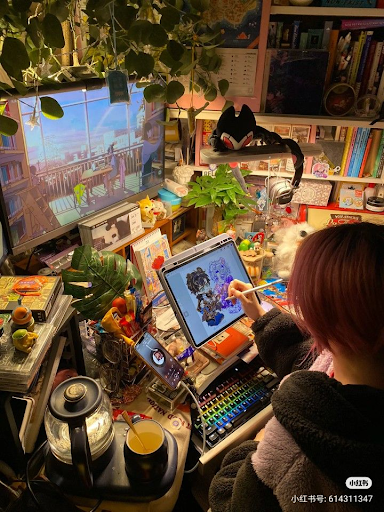As someone who falls in love with a new movie franchise or obsesses over a new show every other week, my newly found addiction is evident.
It will be subtle at first but slowly it will take over my art and my speech as I will begin to echo the patterns of characters. At some point, it will be all that you will be hearing coming out of my mouth.
When I watched BBC Sherlock over Spring Break, I had an overly pretentious British accent. So much so that even my own grandmother complained of the fact that I was speaking Cantonese with a British accent.
After watching the phenomenal animated show “Arcane”, my drawings began to resemble their style with sharp noses and unblended shading techniques.
For many artists, fanart is a way to pay tribute to the world that they had fallen in love with.
Fanart is a genre of art that is based on pop culture figures and popular media. Artists will copy characters or art styles and give it their own unique twists.
However some say that creating fanart confines an artist to a specific style and subject, at the same time complaining about how fanart takes away from the original artwork as it can overshadow the original artist’s intent.
While many people may call artists who make fanart as unoriginal and don’t consider it as art rather more as a form of mimicry, it is important to remember that some of the most famous artists are fan artists.
The Renaissance was an era where culture and the arts saw astronomical growth and where famous artists began to establish their places in society.
Figures such as Leonardo Da Vinci, Carravaggio, Michelangelo, and many of the most celebrated names in art history came from this golden era.
Originating in Florence Italy around the thirteenth to fourteenth century, art began to greatly improve during this time as artists such as Da Vinci began to study anatomy to better understand the subjects of their art and Caravaggio became a master of light.
We began having art with depth as artists began to experiment with making realistic art. The Renaissance drew inspiration from Ancient Greek culture who were well-known for their interest in anatomy.
Many other art movements would follow the Renaissance such as Romanticism, Impressionism, and Contemporary. Artists began to have more and more freedom in their choice of art as well as a more fluid definition of beauty.
However, all artists would have to have a patron if they hope to continue making art. It doesn’t matter how talented they are, without money, they would starve.
Patrons at the time viewed art as something to be purchased and artists had to do their best to satisfy their patrons.
Almost all art at the time was done for others, influential figures often paid artists a lot of money to get their portraits done as cameras didn’t exist at the time. Portraits were the only way to make sure that people will know of the way you look centuries after your death.
It was also incredibly popular to find art that depicted scenes of the Bible.
At the time, the majority of the population was illiterate.
Society still wanted people to practice religion and understand the Bible so they hired artists to paint famous scenes of the Bible so that it could be accessible to everyone.
Their art depicted important scenes from the Bible, such as Da Vinci’s famous painting “The Last Supper” with prominent figures such as Jesus and his twelve apostles.
The Bible was more than a book of faith for Renaissance scholars, it was the book that nearly all artists from the time drew inspiration from.
It’s strange to me that when an old white man creates a piece of art based off of something that he did not create himself, the world celebrates him and remembers him for all of history.
Yet when I do it, I lack creativity and am “hyper fixated” which I am then berated with long droning talks about how I am wasting my time and must repent for it by doing yet another hour of math problems.
The Renaissance was literally a period of art where artists dedicated their works to the most popular book in history.
So the next time you hear someone criticizing the artistic choices of another person, remind them politely that the only artists they know are probably old European fan artists.

